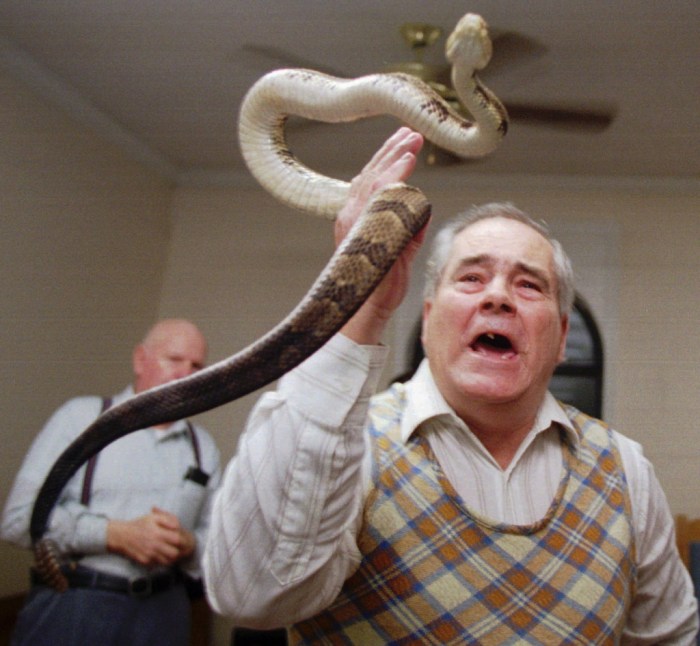
Introducing how to handle his snake yumi sin and fit kitty, this guide delves into the intricacies of snake and cat interactions, providing a comprehensive understanding of their behaviors, handling techniques, and the creation of a harmonious environment.
Understanding the nuances of snake and cat interactions is crucial for ensuring their safety and well-being. This guide will navigate you through the complexities of handling these fascinating creatures, empowering you with the knowledge and strategies to foster a peaceful coexistence.
Snake and Kitty Interaction Basics
Understanding the typical behaviors of snakes and cats when interacting is crucial for ensuring safety and fostering positive experiences. Snakes are generally non-aggressive towards cats, but their natural instincts may trigger defensive or predatory responses when feeling threatened. Cats, on the other hand, are curious and playful creatures that may approach snakes out of curiosity or a desire to hunt.
I’m having a blast with my new snake, Yumi Sin, and my adorable kitty, Fit Kitty. They’re both so much fun, but I’m always looking for ways to improve my handling skills. I recently came across an article on how to increase insurance agent productivity that had some great tips that I’m going to try out.
I’m hoping that by following these tips, I can become a more efficient and effective snake and kitty handler.
Positive Interactions
- Cats and snakes coexisting peacefully in the same household, respecting each other’s boundaries.
- Snakes allowing cats to approach and even touch them without displaying defensive behavior.
- Cats exhibiting playful behavior around snakes, such as batting or chasing them gently.
Negative Interactions
- Cats attacking snakes, resulting in injuries or even death to the snake.
- Snakes biting cats in self-defense, causing pain and potential infection.
- Cats becoming stressed or fearful around snakes, leading to avoidance or aggressive behavior.
Importance of Proper Supervision
Supervision is essential during any interaction between snakes and cats. This allows for timely intervention if any negative behaviors arise. Owners should closely monitor their pets’ body language and reactions, separating them immediately if signs of aggression or fear are observed.
Handling his snake Yumi Sin and fit kitty can be a handful, but it’s nothing compared to the challenges of increasing insurance agent productivity. If you’re struggling to get your team motivated and productive, check out this helpful article on how to increase insurance agent productivity . Once you’ve got that under control, you can get back to the important stuff, like making sure Yumi Sin doesn’t eat the kitty.
Handling Considerations for Both Species

Understanding the proper handling techniques for snakes and cats is essential for their safety and well-being. Improper handling can lead to stress, injury, or even aggression.
Snake Handling
- Always approach a snake calmly and slowly.
- Support the snake’s body with one hand while gently lifting its head with the other.
- Avoid squeezing or constricting the snake, as this can cause discomfort or injury.
- Handle snakes in a secure environment where they cannot escape or be disturbed.
Cat Handling
- Approach a cat gently and avoid startling it.
- Scoop up a cat from underneath, supporting its body with both hands.
- Never lift a cat by its tail or limbs, as this can cause pain or injury.
li>Handle cats in a calm and reassuring manner to minimize stress.
Creating a Compatible Environment

Establishing a harmonious living space for snakes and cats is crucial to minimize conflict and ensure their well-being. This involves creating separate enclosures, designated feeding areas, and providing environmental enrichment that caters to both species’ needs.
Separate Enclosures, How to handle his snake yumi sin and fit kitty
Snakes and cats have different habitat requirements. Snakes require a secure and temperature-controlled enclosure that mimics their natural environment. Cats, on the other hand, need a spacious area with ample vertical space for climbing and perching.
Separate enclosures prevent direct contact between the animals, reducing stress and the risk of injury. The enclosures should be escape-proof and large enough for the animals to move around comfortably.
Designated Feeding Areas
Feeding snakes and cats in separate locations is essential to prevent competition and aggression. Snakes should be fed in their enclosure, away from the cat’s reach. Cats should have their food and water bowls in a quiet area where they feel safe.
Feeding in designated areas helps establish a routine and prevents the animals from associating each other with food, which can lead to conflict.
Environmental Enrichment
Enriching the environment for both snakes and cats is crucial for their physical and mental well-being. Snakes benefit from hiding places, such as caves or logs, and a water bowl large enough for them to soak in.
Cats need a variety of interactive toys, scratching posts, and elevated platforms to climb and explore. Providing these enrichment items helps stimulate their natural instincts and reduce boredom.
Training and Behavior Modification

Training and behavior modification play a crucial role in managing interactions between snakes and cats. By training snakes to behave calmly around cats and modifying cat behavior to reduce curiosity or aggression towards snakes, we can create a more harmonious environment for both species.
Training Snakes to Behave Calmly Around Cats
Training snakes to remain calm around cats involves positive reinforcement techniques. Here are some steps to follow:
- Start by introducing the snake and cat to each other in a controlled environment, such as a large, enclosed space with plenty of hiding spots.
- Keep the interactions short and supervised, gradually increasing the duration as the snake becomes more comfortable.
- Reward the snake with treats or praise when it remains calm in the presence of the cat.
- Repeat these interactions regularly, gradually increasing the proximity and duration of the encounters.
Modifying Cat Behavior to Reduce Curiosity or Aggression
Modifying cat behavior to reduce curiosity or aggression towards snakes requires a combination of positive reinforcement and redirection techniques:
- Provide the cat with alternative sources of stimulation, such as toys, interactive games, and catnip, to reduce their curiosity about the snake.
- Redirect the cat’s attention away from the snake when it shows signs of interest or aggression. This can be done by offering treats, toys, or engaging in play.
- If the cat persists in showing aggression towards the snake, consult with a veterinarian or animal behaviorist for professional guidance.
Health and Safety Concerns
Cohabitation between snakes and cats requires careful attention to health and safety concerns. Both species have unique needs and potential risks that must be considered.
Learning how to handle his snake yumi sin and fit kitty can be a great way to improve your relationship with your pet. You can learn how to handle his snake yumi sin and fit kitty safely and effectively by following some simple tips.
For more information, check out how to handle his snake yumi sin and fit kitty . Handling his snake yumi sin and fit kitty can be a rewarding experience for both you and your pet.
Veterinary care is crucial for both snakes and cats. Regular check-ups and vaccinations help prevent and detect health issues. For snakes, proper enclosure setup, temperature, and humidity control are essential for their well-being.
To master handling his snake Yumi Sin and fit Kitty, one must first establish a connection with the animals. This involves understanding their body language, respecting their boundaries, and providing a safe and comfortable environment. By practicing patience and consistency, one can gradually build trust with these creatures.
For more in-depth guidance on how to handle his snake Yumi Sin and fit Kitty, refer to this comprehensive guide .
Potential Health Risks
- Snake Bites:Even non-venomous snakes can inflict painful bites. Cats may be curious or playful, leading to accidental encounters.
- Parasites:Snakes can carry parasites that can be transmitted to cats, such as mites, ticks, and intestinal worms.
- Respiratory Issues:Snakes may shed their skin, releasing dander that can trigger respiratory problems in cats.
- Allergies:Some cats may be allergic to snake saliva or dander, causing skin irritation or respiratory distress.
Preventing Injuries and Ensuring Well-being
- Supervise Interactions:Never leave snakes and cats unsupervised together. Supervise all interactions closely.
- Separate Enclosures:Provide separate enclosures for each pet to ensure their safety and reduce stress.
- Quarantine New Pets:Before introducing new pets to the household, quarantine them for at least 30 days to rule out any potential health issues.
- Regular Veterinary Care:Take both pets for regular veterinary check-ups and vaccinations to prevent and detect health problems.
- Educate Children:Teach children about the potential risks and proper handling techniques to prevent accidental injuries.
Conclusion

In conclusion, handling his snake yumi sin and fit kitty requires a multifaceted approach that encompasses understanding their natural behaviors, implementing proper handling techniques, creating a compatible environment, and addressing training and behavior modification. By adhering to these principles, you can cultivate a harmonious relationship between your snake and cat, ensuring their safety, health, and well-being.
Clarifying Questions: How To Handle His Snake Yumi Sin And Fit Kitty
What are the potential risks of improper handling of snakes and cats?
Improper handling can lead to injuries for both snakes and cats. Snakes may bite if they feel threatened, while cats may scratch or bite if they are startled or provoked.
How can I create a compatible environment for my snake and cat?
Provide separate enclosures for each animal, and ensure they have their own designated feeding areas. Enrich the environment with hiding places and climbing structures for both species.
What training techniques can I use to modify my cat’s behavior towards snakes?
Use positive reinforcement to reward your cat for calm behavior around snakes. Gradually expose your cat to snakes in a controlled environment, and provide treats when they remain calm.





